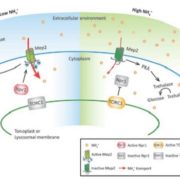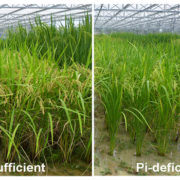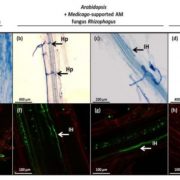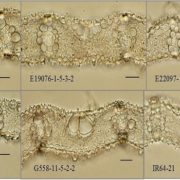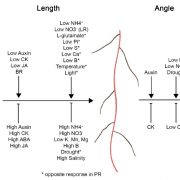Review: Chloroplast ion homeostasis
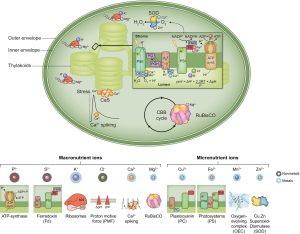 Healthy plants require access to several mineral nutrients, which are usually taken up in ionic form. The details of nutrient uptake, distribution, and function have been painstakingly revealed over several decades. In this excellent new Tansley Review, Kunz et al. provide an overview of ion homeostasis with a focus on the chloroplast and the roles of these mineral ions in photosynthesis. Moving charged ions across membranes requires transport proteins, and plastids have three sets of membranes (outer, inner, and thylakoid) so there is a lot of information about the many transporters involved. Functionally, plastid mineral ions have diverse roles. Several, such as Cu2+, Fe2+, Mn2+, and Zn2+, are necessary as cofactors for the light harvesting and electron transport proteins, and the mechanisms that ensure their homeostasis (right place, right time, right amount) are described. The authors also look at how changing light conditions affect activities of some of the key transporters such as KEA3. They also present the phylogenetic distribution of orthologues across the photosynthetic lineages, noting that cyanobacteria, ancestral plastids, show little overlap with the eukaryotic transportome. The review concludes with a discussion of future research areas, noting that plastid ion homeostasis provides an untapped approach to engineer improved photosynthesis in plants. (Summary Mary Williams @PlantTeaching) New Phytol. 10.1111/nph.19661
Healthy plants require access to several mineral nutrients, which are usually taken up in ionic form. The details of nutrient uptake, distribution, and function have been painstakingly revealed over several decades. In this excellent new Tansley Review, Kunz et al. provide an overview of ion homeostasis with a focus on the chloroplast and the roles of these mineral ions in photosynthesis. Moving charged ions across membranes requires transport proteins, and plastids have three sets of membranes (outer, inner, and thylakoid) so there is a lot of information about the many transporters involved. Functionally, plastid mineral ions have diverse roles. Several, such as Cu2+, Fe2+, Mn2+, and Zn2+, are necessary as cofactors for the light harvesting and electron transport proteins, and the mechanisms that ensure their homeostasis (right place, right time, right amount) are described. The authors also look at how changing light conditions affect activities of some of the key transporters such as KEA3. They also present the phylogenetic distribution of orthologues across the photosynthetic lineages, noting that cyanobacteria, ancestral plastids, show little overlap with the eukaryotic transportome. The review concludes with a discussion of future research areas, noting that plastid ion homeostasis provides an untapped approach to engineer improved photosynthesis in plants. (Summary Mary Williams @PlantTeaching) New Phytol. 10.1111/nph.19661


